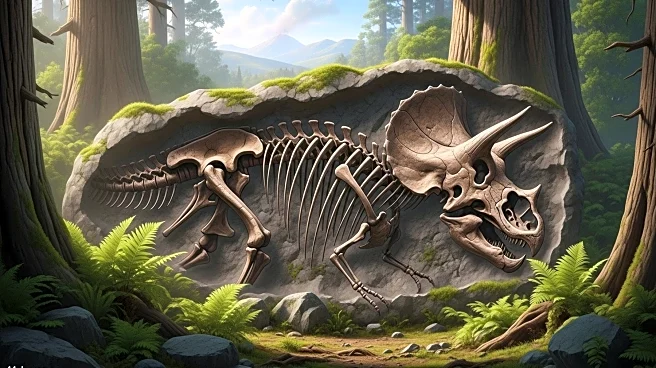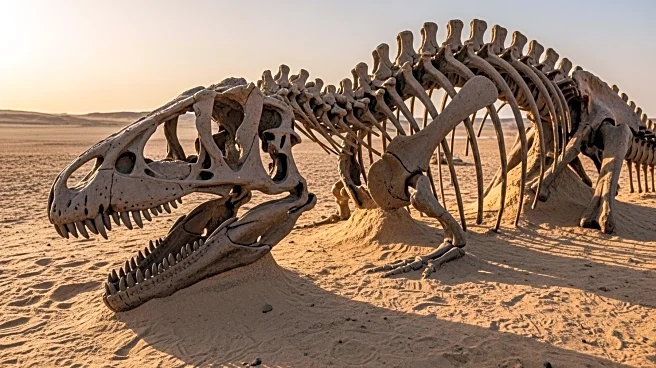What is the story about?
What's Happening?
Paleontologists have discovered a new species of dinosaur, Huashanosaurus qini, in the Guangxi region of China. This plant-eating dinosaur, measuring 39 feet long, is part of a new genus and species of early eusauropod from the Jurassic period. The partial skeleton was found in the Shiwandashan Basin, containing fossils of vertebrae, ribs, and other bones. The discovery indicates that H. qini is likely the oldest sauropod in South China, dating back to the early to middle Jurassic period, predating previously known sauropod fossils by about 30 million years. The dinosaur likely lived in forested river and lakeside environments, contributing to the understanding of the region's ancient ecosystem.
Why It's Important?
The discovery of Huashanosaurus qini provides valuable insights into the diversity and evolution of Jurassic-era eusauropods in China. It enhances the understanding of how these massive herbivores adapted to their environments and the ecological dynamics of the time. This finding also contributes to the broader knowledge of sauropod evolution and their distribution across different regions. The research underscores the importance of paleontological studies in uncovering the history of life on Earth and how ancient species interacted with their surroundings.
Beyond the Headlines
The discovery of H. qini may prompt further exploration and excavation in the Guangxi region, potentially leading to more significant paleontological finds. It also raises questions about the evolutionary pathways of sauropods and their adaptation mechanisms. The research highlights the collaborative efforts of scientists from various institutions, emphasizing the importance of interdisciplinary approaches in advancing scientific knowledge. Additionally, the findings may inspire educational initiatives and public interest in paleontology and the history of life.
AI Generated Content
Do you find this article useful?














